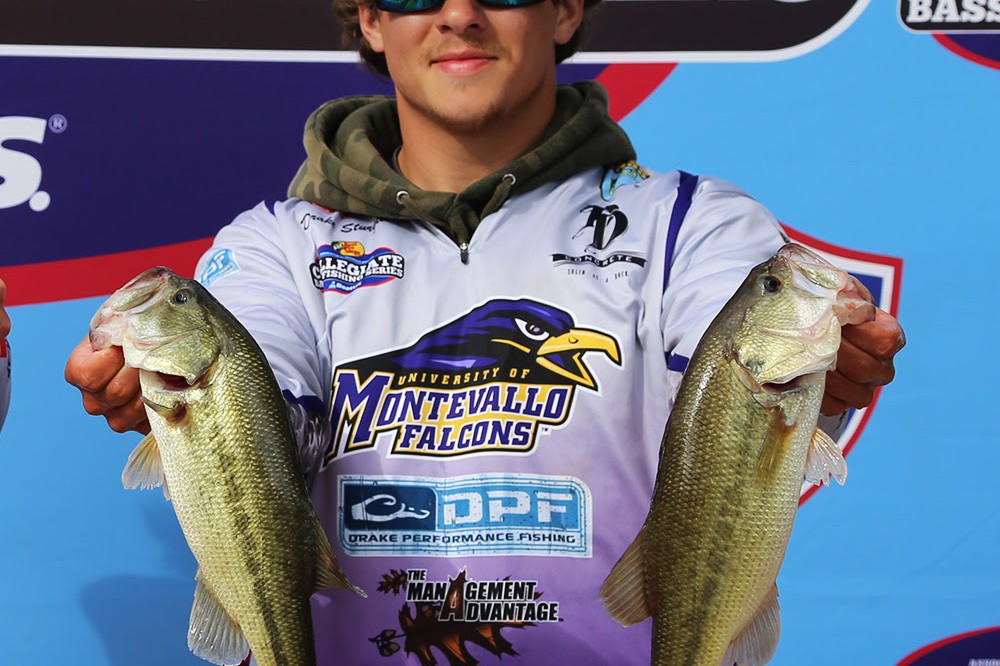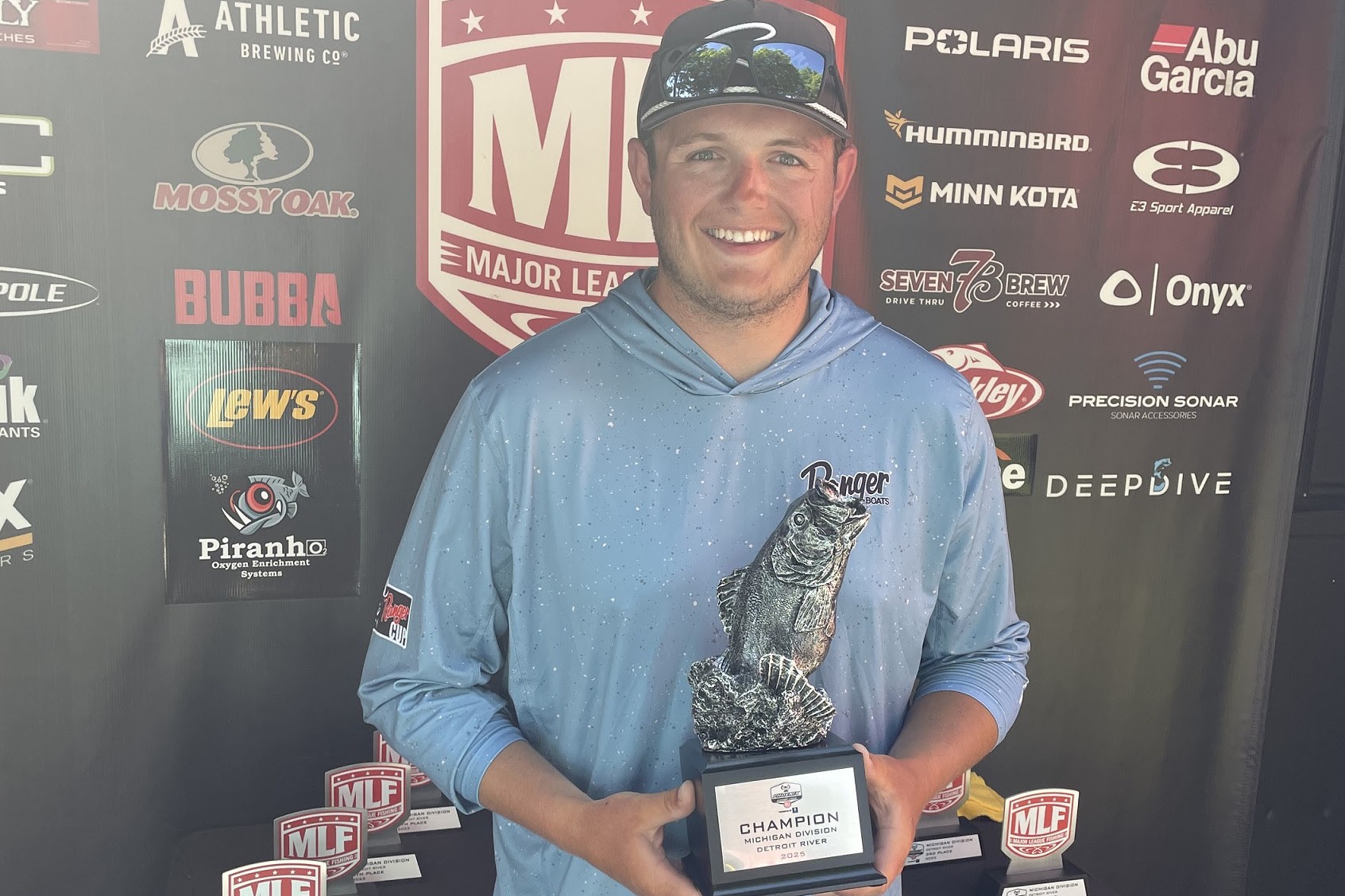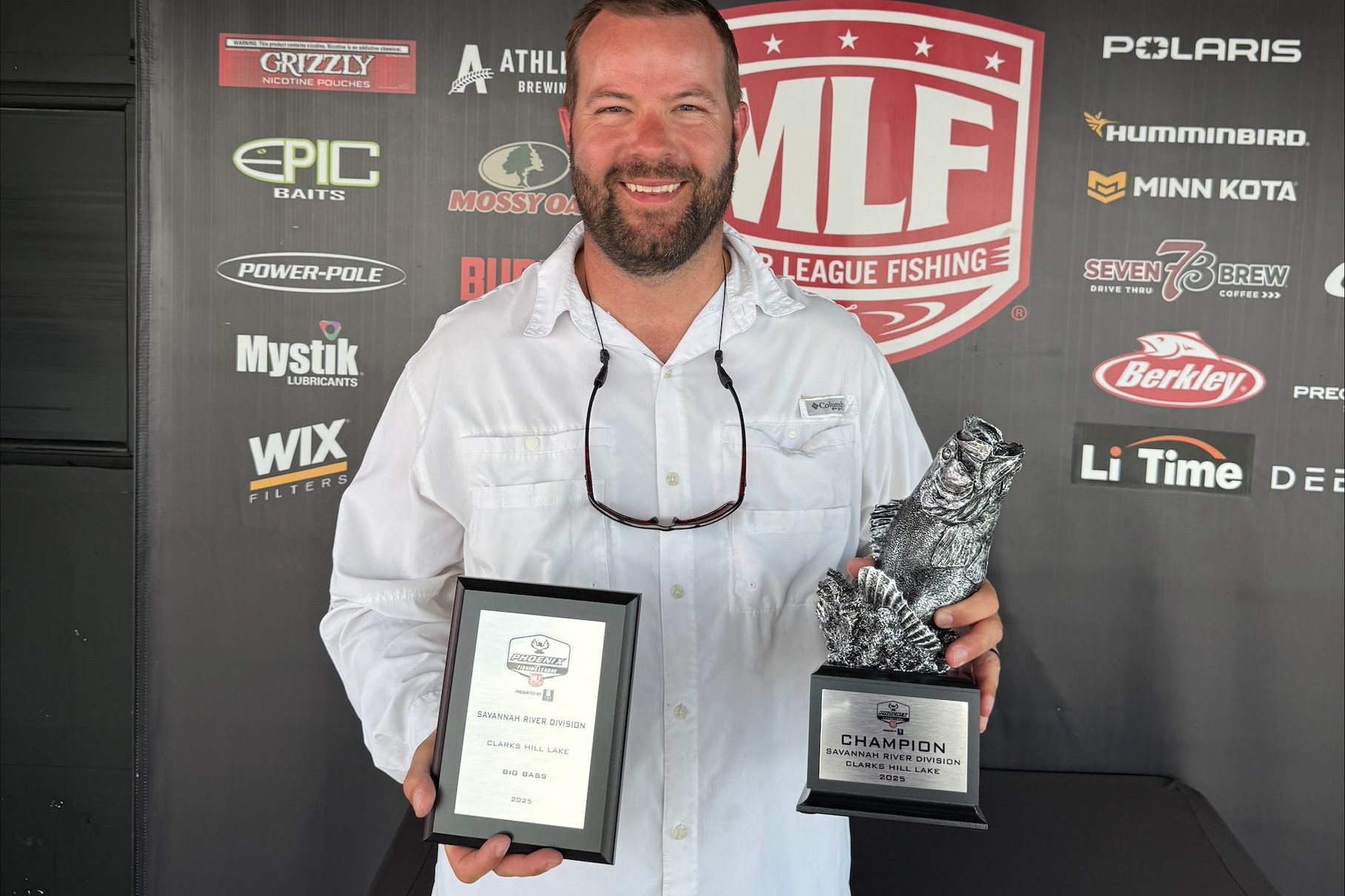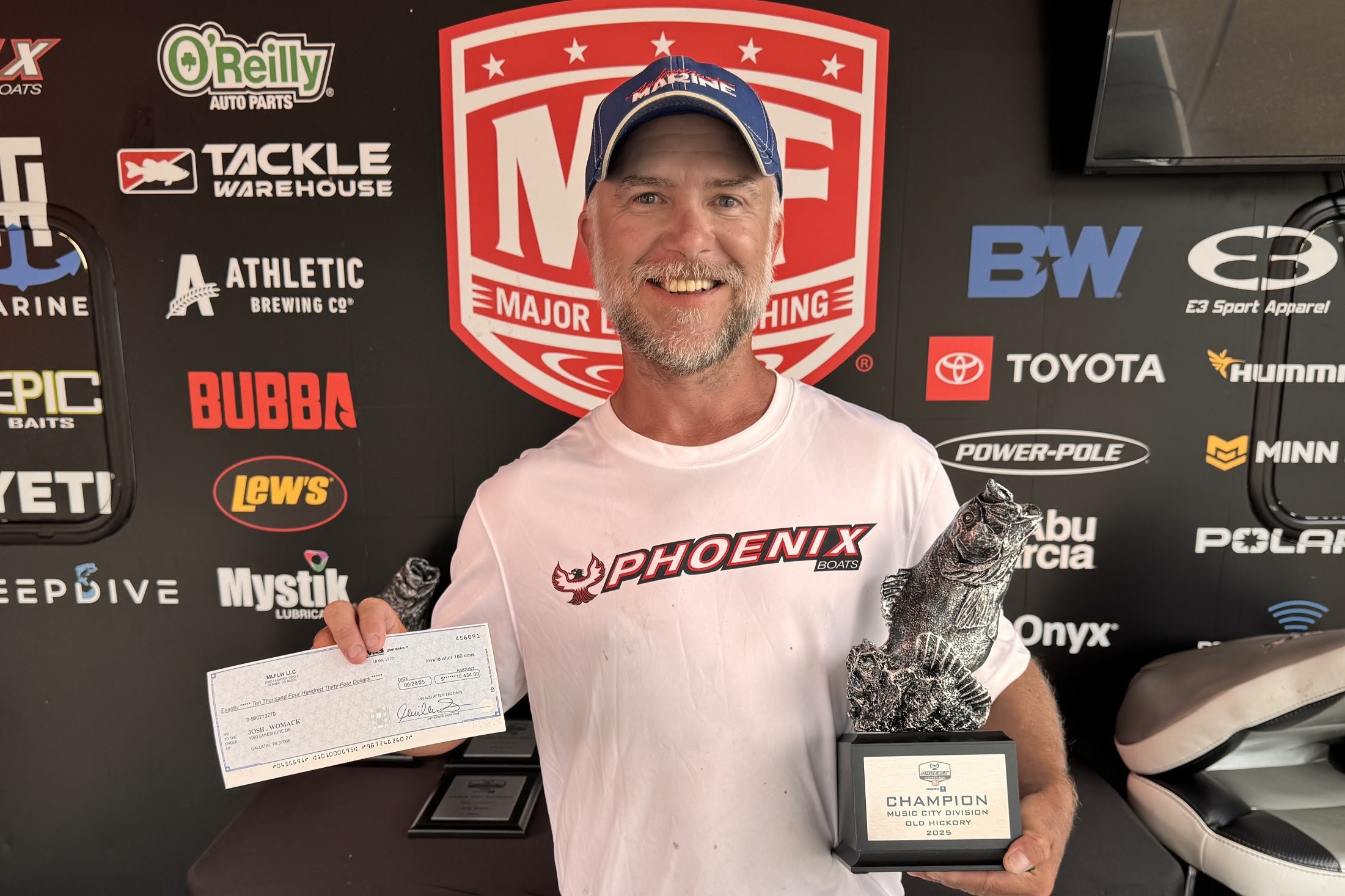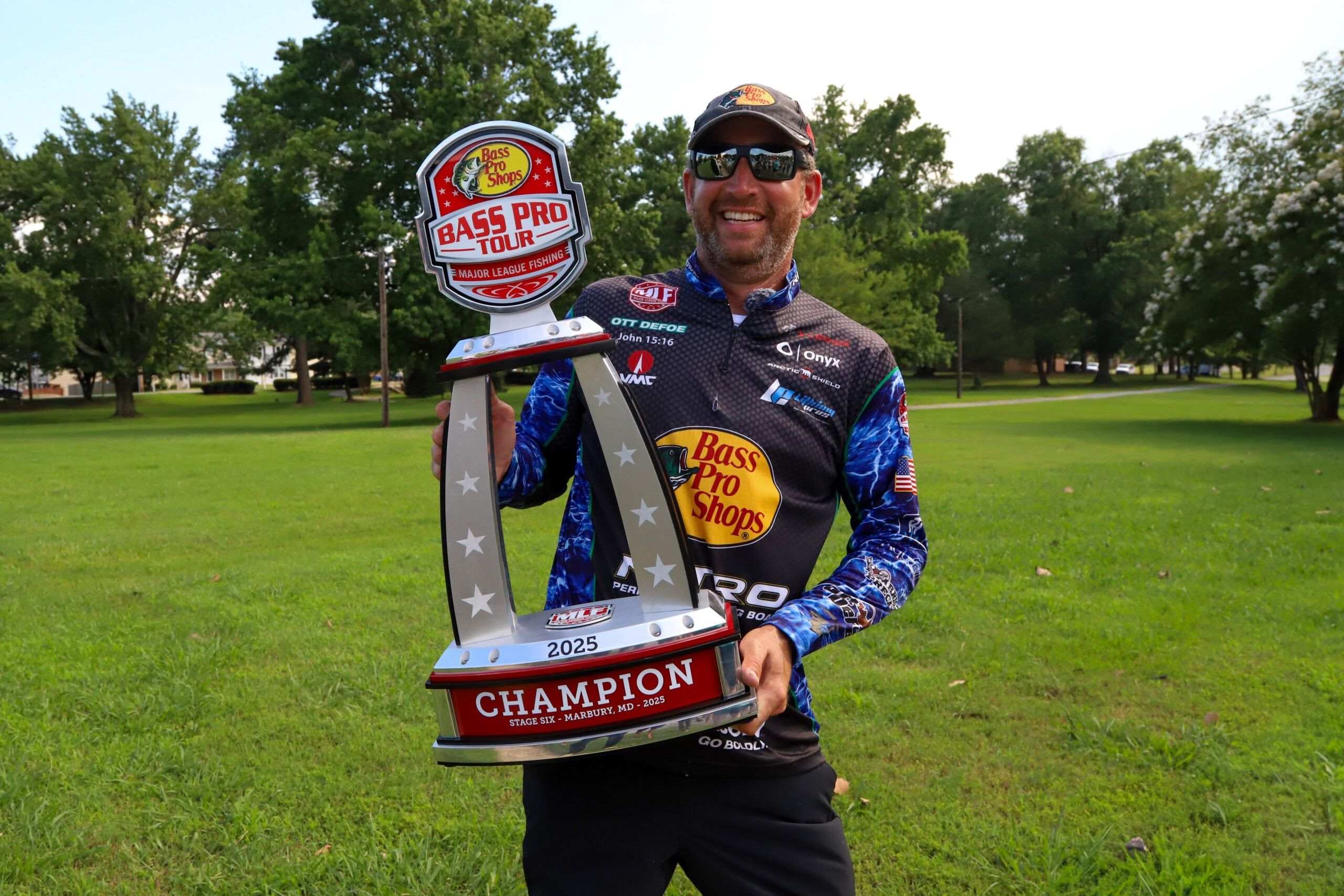Ron Ryals on the power of the Fluke
Courtesy of Vance McCullough
A popular guide on Florida’s famed Bienville Plantation, Ron Ryals often puts a fluke in the hands of a client, knowing they will soon be handling big bass as well. He doesn’t need shiners to produce memorable trips on the well-managed lakes that also serve as a great laboratory for the exploration of various techniques.
“All we use is artificials,” declares Ryals. The teacher is also a student, studying how different customers use the fluke. Likewise, he’s been taken to school by co-anglers throwing flukes behind him in his boat on competition days. All of this has helped Ryals to refine his approach with this simple piece of plastic, a tool he relies on heavily when fishing the Bassmaster Eastern Opens.
“I throw a fluke more than anything else,” says Ryals. “I’ve got a lot of confidence in it. I’ve always got one tied on.”
Co-anglers commonly follow the sport’s best pros with a fluke and rack up impressive weights. Once they make the jump to the front deck, the vast majority of these same anglers inexplicably stash the soft jerks in favor of more ‘sophisticated’ lures and techniques.
Ryals is not among them.
While the fluke has played a major role for him on Florida fisheries such as the Kissimmee Chain and Harris Chain, Ryals has used the simple lure to great advantage all across the nation for fun and profit. “Illinois, especially Rend Lake, Texas, Oklahoma, New York. I had a really good time on the Potomac River with them, fishing big grass flats at the mouths of major creeks,” he shares.
Perhaps most memorable for Ryals is the tournament, and again, the technique, that launched him into serious tournament competition. “It was in the fall,” he begins. “I was fishing the Paralyzed Veterans of America trail – you don’t have to be a veteran to fish them – and I threw a double fluke rig to place 7th on Clark’s Hill. That gave me the Angler of the Year title for the PVA trail which also qualified me for the 2010 B.A.S.S. Nation Championship on the Red River. That river was very intimidating, and I didn’t do well but I watched Brandon Palaniuk win that tournament and qualify for the Classic and the Elite Series. We see where he is now. That experience gave me a lot of confidence. Up until that point, I had only fished the Opens a little bit. The fluke played a huge roll in all of that.”
Away from the pressures of tournament angling, the fluke produced a 10-pound, 9-ounce bass for Ryals from the Suwannee River while he was fun fishing near his home in Live Oak, Fla. Sasquatch sightings are more common than 10-pound bass along the river which drains from the Okefenokee Swamp, a hot spot for Big Foot encounters. The Suwannee is a much better place to catch numbers of spirited, smaller bass. Ryals is justifiably proud of his unusually large fish and the technique that produced it in an unlikely location, though true fluke practitioners are rarely surprised at their success.
Ryals says patience, or lack thereof, is likely the only thing that stops more tournament anglers from using it in competition. Soft jerkbaits seem to take too much precious time for many hyped-up fishing pros. “We fish one for fun all the time but in a tournament, sometimes we feel like we need to cover a hundred yards of bank in five minutes,” admits Ryals.
As a result, he sees “very few” competitors using it. Ryals is fine with that. He enjoys a high level of comfort when fishing behind other competitors. “I know I can go down the bank and pick up fish they are missing,” he grins.
As much as anglers hate to admit it, even on the best days, bass spend most hours in something other than all-out feeding mode. “If they’re not wanting to chase those moving baits as much, even though they’re chasing shad, if you twitch it, kill it and just let it sink down for a couple of feet that’s when they’re gonna eat it if they’re pressured, in my experience fishing behind somebody,” shares Ryals. “Twitch it, let it sink down, twitch it again, let it sink down – it’s different than a moving bait. They think ‘huh, that’s a little different. That’s a dying shad or herring.’ They’ll pick it up and you’re good to go.”
While the fluke may be the ultimate imitation of a dying baitfish during a winter shad kill, don’t make the mistake saving it for only the slowest times. It is among the most multifaceted lures ever devised and can be adapted to fit most any situation. “I literally fish it twelve months out of the year,” says Ryals. “In the spring you can pitch it across a bed, let it sink down and they’ll think it’s trying to mess with the bed. Then, especially at Bienville when we’re guiding, those fish will start schooling right after they come off the spawn and you can work it just as fast as you want to on top of the water with it jumping and darting everywhere and they really like it like that. The fluke is also great in the fall time when shad start bunching up in pockets.”
Ryals prefers the power of baitcasting gear to spinning outfits for the weightless presentation. “I like a 6’ 9” medium heavy baitcasting rod – Lew’s rods and reels have worked well for me – twelve-pound fluorocarbon line with a number twelve swivel about a foot, maybe fourteen inches, up the line.”
The swivel is an important component for Ryals. The extra weight gets the lure down to make it more efficient but also protects his line. “I originally did it just for the twist. The fluke spins in the water some, especially if it’s torn up or caught a few fish, but the swivel adds some weight too. It also adds a different action to it that I like.”
As for the question of when to set the hook, “I just make sure it’s heavy,” says Ryals. “I kind of give it a little bit and then set the hook. I don’t give them very long at all, but whether I feel that thump or see the blow up, I just make sure it’s heavy and then set the hook.”
The hook he’s setting these days is a 4/0 Mustad Grip-Pin Big Bite Soft Plastic Hook. It’s stealthy, especially when compared to an EWG style often favored by anglers for soft plastics. He believes a hook can be too big for the fluke, but the Big Bite model fits perfectly. “It comes right to the back of the hook pocket (in the lure), right before the bait gets thin.” The taper of the hook, combined with a modest bend, helps to give the lure a cone-shaped head which comes through cover well while keeping the plastic pinned. “That little epoxy bead near the eye of the hook holds the bait really well when you pop it or twitch it out of the grass.
“I tried wide gap hooks and I ended up losing more fish or didn’t get a good hookset and I just went back to the offset, round bend hook. It’s worked.”
Weather-wise, a breeze is helpful, but strong wind is the major limiting factor for this technique. It makes casting difficult, blows a big bow in the line that moves the lightweight offering out of the strike zone quickly and makes strike detection a challenge. Ryals has some great advice for fishing an unweighted fluke in the wind: “Don’t!”
Water clarity is another factor to consider. The clearer the water, the stronger the drawing power of the soft jerkbait.
Ryals is pretty basic in his size, brand, color selection. “I use the normal size, what are they, 5 inches? And I use a couple different brands, Zoom, and the one made by Bitter’s is good too.”
Watermelon red and watermelon candy are mainstays for Ryals who feels those colors represent a variety of baitfish, as does the fluke in general. He did use the pearl white color in the aforementioned tourney on Clarks Hill but said that he was imitating blueback herring, prevalent in the clear waters of the Savannah River impoundment, more so than shad. “I think the bass see it as any type of bait fish. It can kind of copy any of them. It depends more on how you work it and what you do with it than on color. You can work it slow, almost like a Senko – twitch it a little bit and let it sink down a ways or you can work it on top if they’re chasing bait on the surface. It’s pretty versatile in my opinion.
“Once you have the patience to throw it.”














